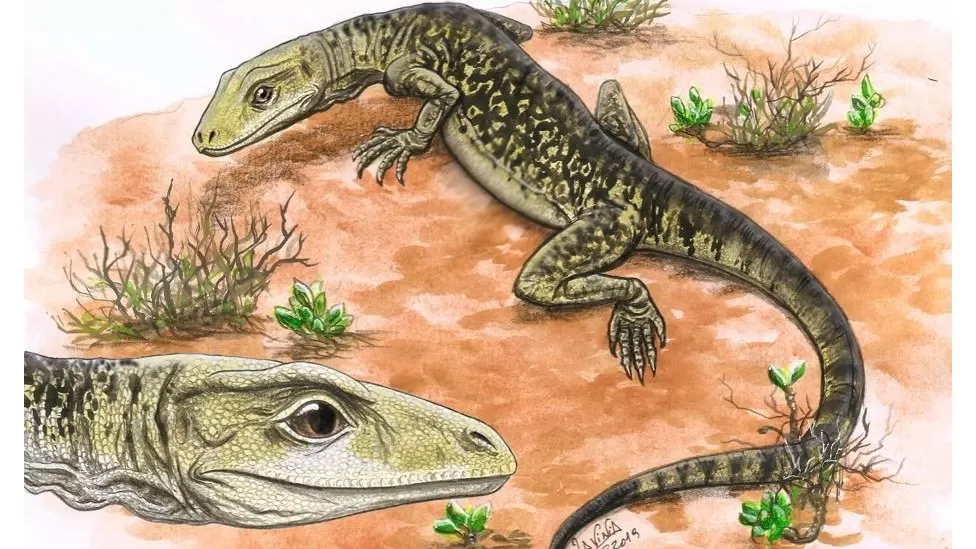Fossil shows lizards millions of years older than thought Published 2 days ago

Dr Whiteside, from Bristol's School of Earth Sciences, first spotted the specimen in a cupboard full of Clevosaurus fossils.
He explained: "This was a common enough fossil reptile, a close relative of the New Zealand tuatara that is the only survivor of the group the Rhynchocephalia, that split from the squamates over 240 million years ago."
"As we continued to investigate the specimen, we became more and more convinced that it was actually more closely related to modern day lizards than the Tuatara group."
The university team made X-rays of the fossil, allowing them to reconstruct it in three dimensions and see the tiny bones hidden inside the rock.
They said Cryptovaranoides was clearly a squamate because it differed from the Rhynchocephalia in several key areas, including the braincase, in the neck vertebrae and in the shoulder area.
Dr Whiteside concluded: "This is a very special fossil and likely to become one of the most important found in the last few decades.
Tags :
Previous Story
- Frog bones found in Cambridgeshire Iron Age ditch...
- Universities warn of EU-UK research scheme 'close to...
- Why scientists are also watching animal YouTube videos
- Extinction: Why scientists are freezing threatened species in...
- Many protected areas do not benefit wildlife, study...
- Scientists map Caribbean coral reefs to tackle climate...
- UK-based scientists smash nuclear fusion energy record
- Onset of modern sea level rise began in...